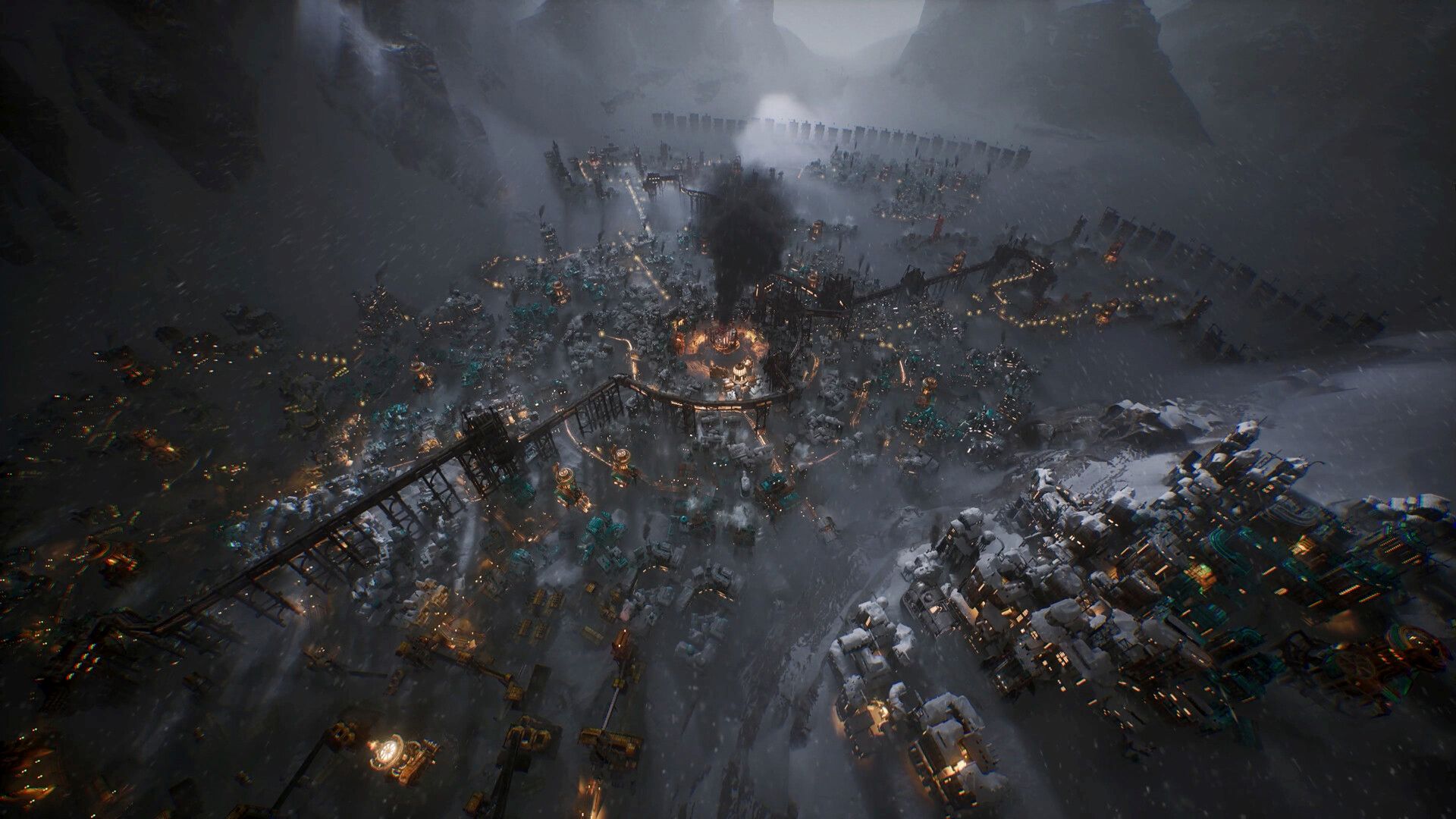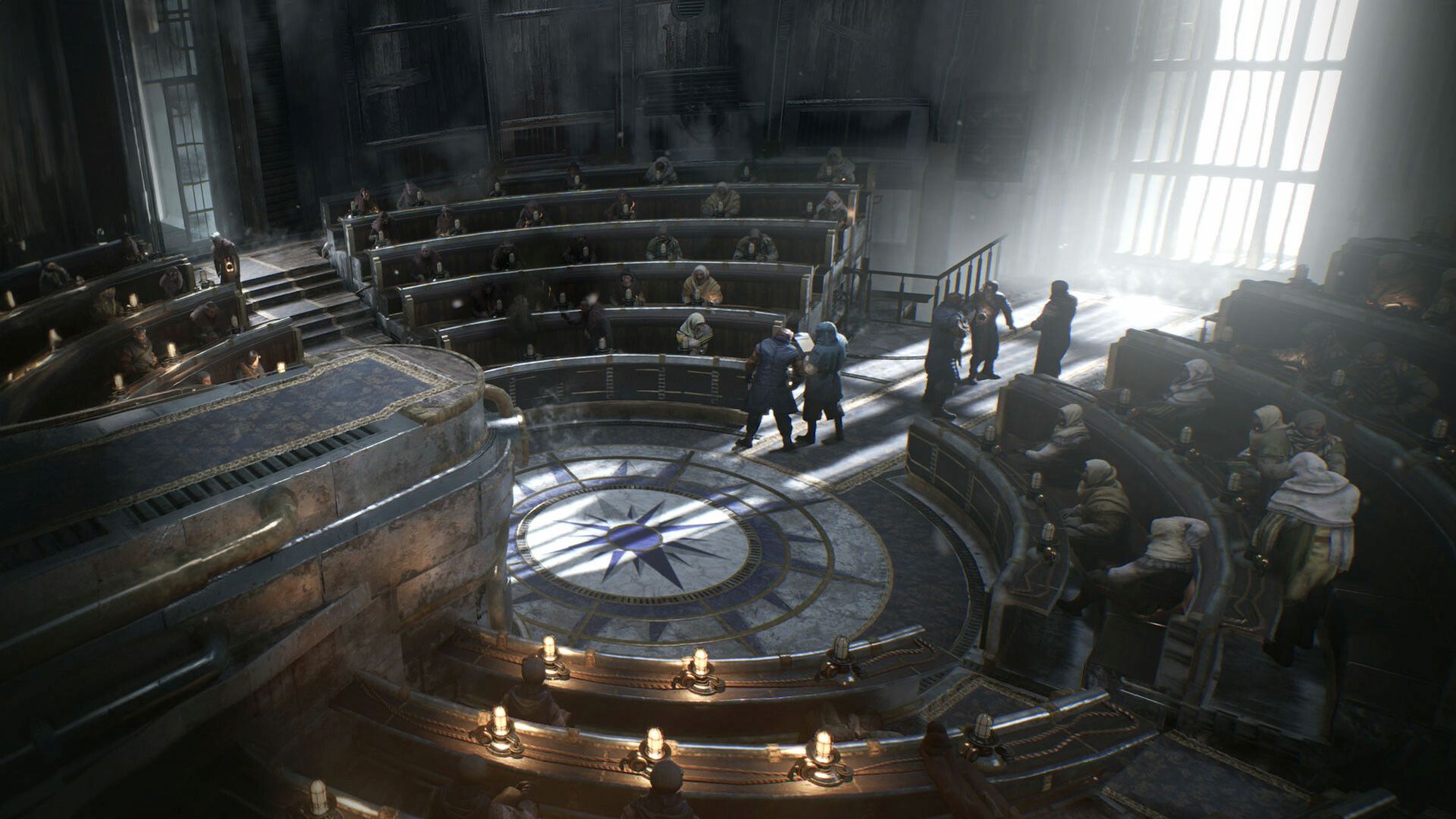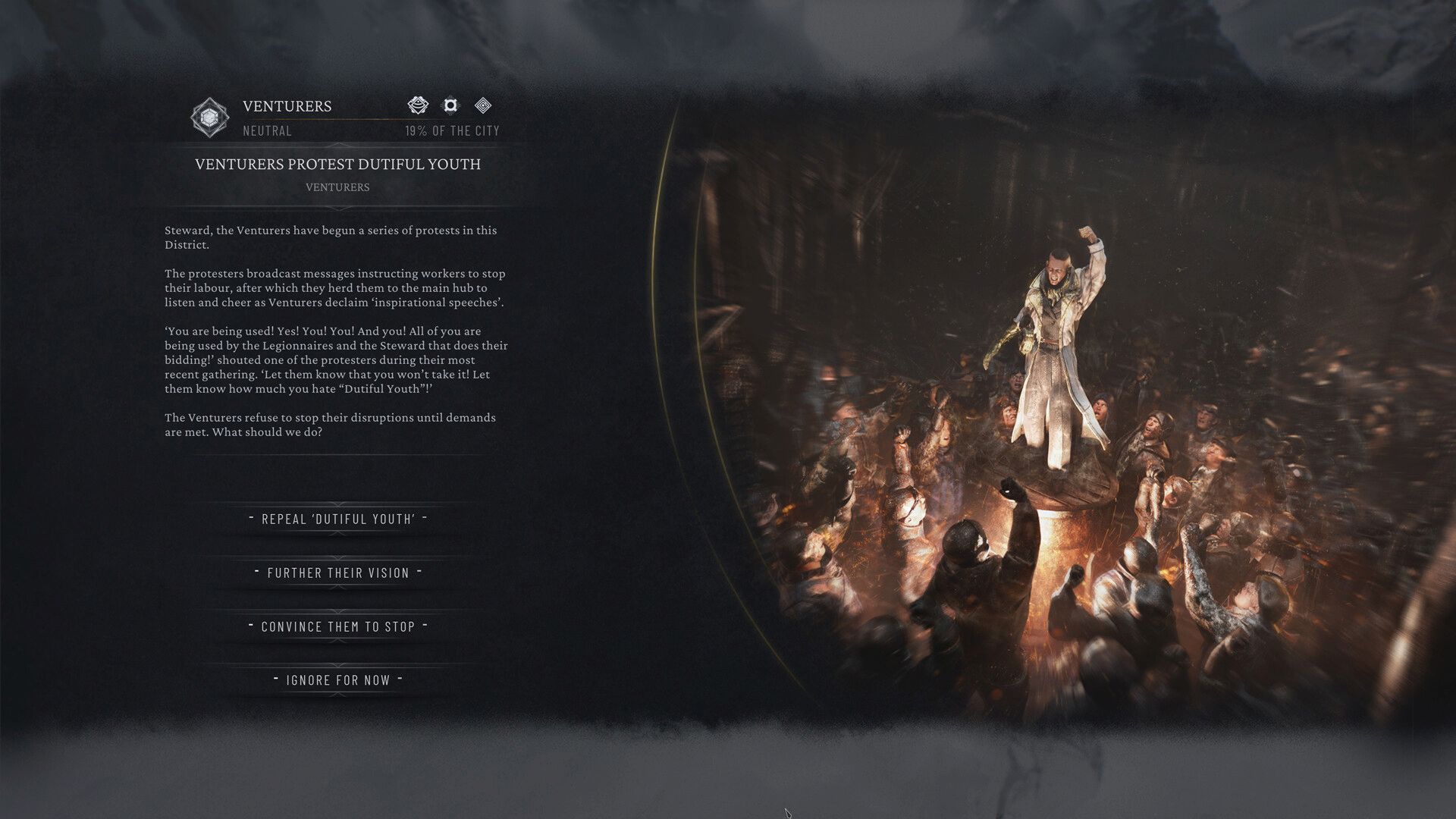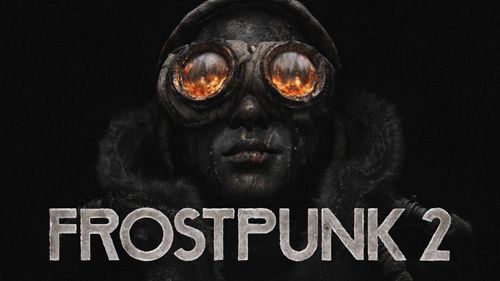Frostpunk 2 Review
Within any video game genre, genuine innovation and originality are a scarce commodity. Most developers take a well-established formula, make a subtle tweak or two, and call it good. 2018’s Frostpunk was a city-builder survival game that wasn’t about growing a thriving urban paradise. On its icy surface, developer 11 Bit Studios’ Frostpunk was a post-apocalyptic city builder, set in an alternative history. Underneath, it brilliantly examined human survival and competing ideologies faced with dire circumstances. Frostpunk 2 shares the first game’s addictive brilliance. But it moves from micro to macro. It’s about expansion and the competing forces that either propel or limit it. Frostpunk 2 is both broader and deeper than the original.
Learn from History, or Not
Frostpunk took place in an alternative 19th century in which two volcanic eruptions shrouded the earth with debris, triggering a new ice age. The game focused on small bands of survivors establishing outposts and mechanisms to stave off the killing cold. As an authoritarian — or more benign — Captain, the player dealt with the forces of religion and secular concerns, child labor, and dwindling resources. Game time ticked down in hours and days.
Set 30 years after the first game, Frostpunk 2 is focused on a single outpost, New London. Very broadly, it’s about a society that has found an uneasy equilibrium with apocalyptic survival, now poised for expansion. Thanks to petroleum power, New London is not restricted to a collection of buildings huddled around a coal-fired furnace. Instead, there’s pressure on the city to expand, locate new resources farther afield, and grow the population into the thousands.

Of course, unrestricted growth is made impossible by resource scarcity. Additionally, new technologies come with new problems, new illnesses, and new clashing ideologies. In Frostpunk 2, the player creates sprawling cities made up of districts, instead of single buildings. Most notably, Frostpunk 2 introduces the idea of multiple factions and the politics of placating disparate (and desperate) groups, each with a different goal for themselves and New London. Instead of being the Captain, you are the Steward. It’s a very different role, less dictator and more Mayor.
The Weather Outside is Frightful
Frostpunk 2 consists of two interconnected layers, though the game doesn’t describe it that way. The first layer consists of the mechanics of building, laying down a series of districts, each with specific functions. In Frostpunk 2, the ice must be frostbroken before it can be built on. After being prepared, the different districts — such as food, housing, industrial, extraction, etc — can be placed, provided there are resources sufficient to build. Of course, even at the building layer, things are not simple. The relationship of districts to each other, like housing next to an illness-causing industrial district, is an important consideration.
At some point, the local area will be tapped out. At this point, the player will begin to build satellite colonies, provided they have climbed the tech tree. The colonies can be very resource-specific or grow to much larger settlements. As New London transitions from coal to petroleum, the necessity of snuggling everything up to the main generator goes away.
Taken alone, Frostpunk 2’s building mechanics are addictive and interesting. Placing every new district is a challenging puzzle, a balancing act of causes and effects. Where Frostpunk’s camera was zoomed in close enough to see individuals and track their suffering, Frostpunk 2’s view is less intimate even zoomed as close as possible. Instead, it’s a beautiful big-picture view, with the movement of energy and citizens represented by colorful lines of moving energy, like busy freeways seen from the air.

Clash of Cultures
In real life, as we all too sadly know, various groups with competing economic or social interests can hinder or help a society. It takes a skillful leader to manage the clashing ideas and facilitate progress. This is the second layer of Frostpunk 2. As the Steward, your goal is to gain the trust of six factions — foragers, machinists, laborers, merchants, thinkers, and lords. In the first game, as Captain you passed laws or edicts that impacted your little society. In Frostpunk 2, you can’t just move up the Idea Tree on your own. You need to be politically savvy and somehow convince everyone that the progressive, economic, and technological vision of the thinkers is in the best interest of the machinists. You have to massage the laborers into agreeing that the lords’ vision will help their quality of life.
If you fail on the political/economic side, the building mechanics can slow or stall. At nearly every turn you need faction support. If your trust level falls to despised you lose. The interrelationship between factional clashes, their management, and the process of city building is complex and adds a deep strategic element to Frostpunk 2. It also means that players in the mood for a chill — pun intended — city builder will be iced out by Frostpunk 2. The game requires serious thought, patience, and strategic planning. The first few minutes of relaxed building give way to hours of tension in short order as things start to fall apart.

Bigger and Better
Frostpunk 2, like the original, has a campaign and sandbox mode called Utopia Builder. The campaign is compelling on its own, but its primary function is to slowly introduce the game’s mechanics, factions, and complications. Diving straightaway into a standalone scenario is possible thanks to the game’s excellent codex, but playing the campaign — maybe multiple times — is well worth the effort. However, the Utopia Builder will probably be the eventual home for most players. In addition to choosing difficulty, victory conditions, and the starting environment, players select which three factions to include or allow the game to randomize them. Even at the lowest, “citizen” difficulty, Frostpunk 2 is a challenge.
The original Frostpunk was a strikingly beautiful game in a cold, desolate, and desperate way. Now using Unreal Engine 5, Frostpunk 2 is equally impressive, with sharp, detailed graphics, striking weather effects, and desolate environments. The complex weave of growing communities and their colorful bands of flowing energy look fantastic. Some intimacy with the individual survivors is lost, but that’s not where Frostpunk 2 is focused. Polish composer Piotr returns for Frostpunk 2’s score and it’s as melancholy and inspired as the original. It has moments of orchestral energy as well, befitting the more expansive nature of the gameplay.

Worth the Wait
Frostpunk 2 trades intimacy and the plight of individual survivors for the challenges of growth and sustainability. The threat of extinction is mixed with economic challenges and the vaguely hopeful promise of long-term survival. Frostpunk 2 broadens the scope and deepens the mechanics of the first game, adding even greater complexity to puzzle-like city building that remains addictive and unique in the genre.
***PC code provided by the publisher for review***
The Good
- Looks amazing
- Deep and challenging
- Addictive city building
- Lots of replay value
- Beautiful musical score
The Bad
- Can be very complex
- Some minor bugs

